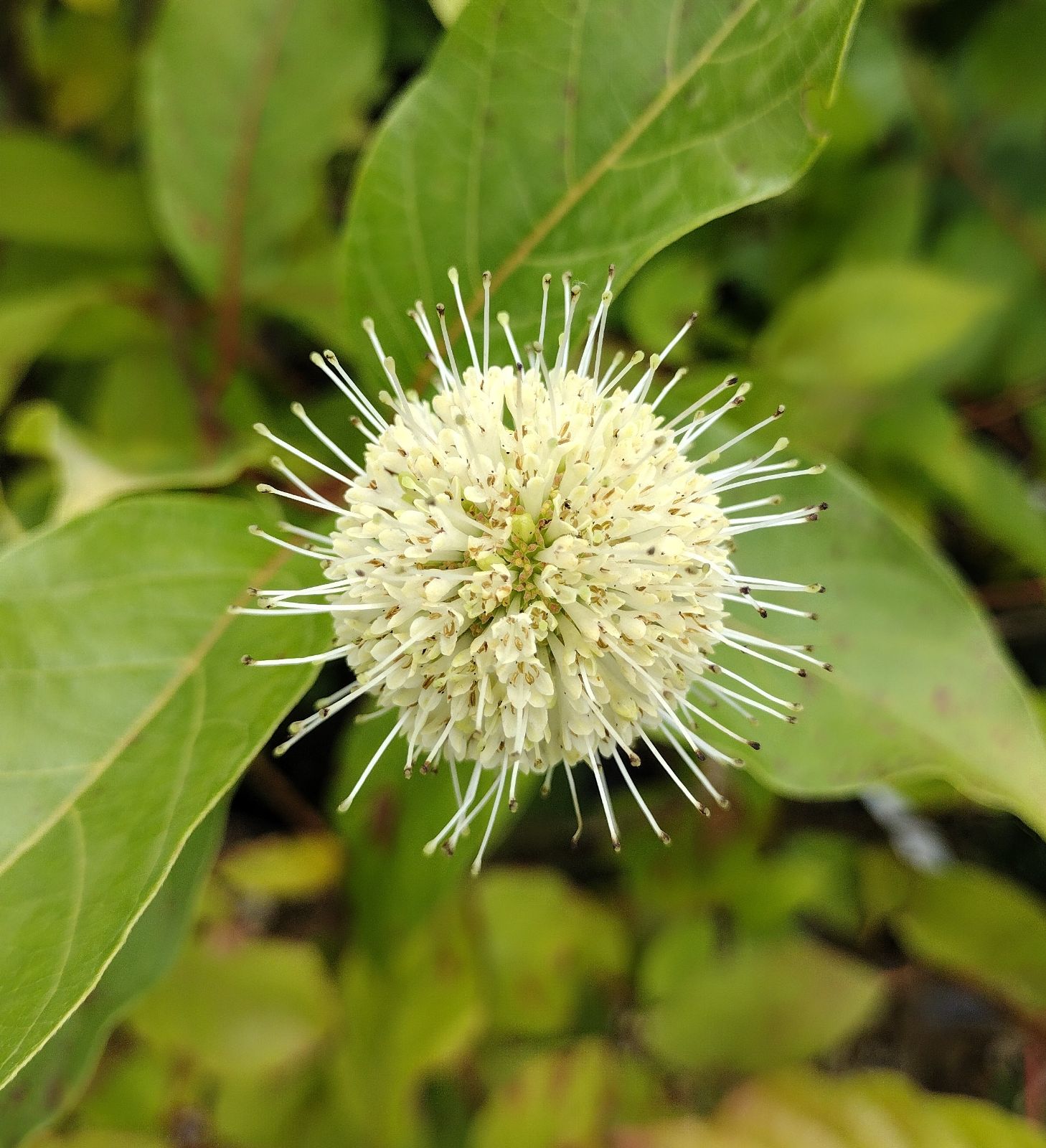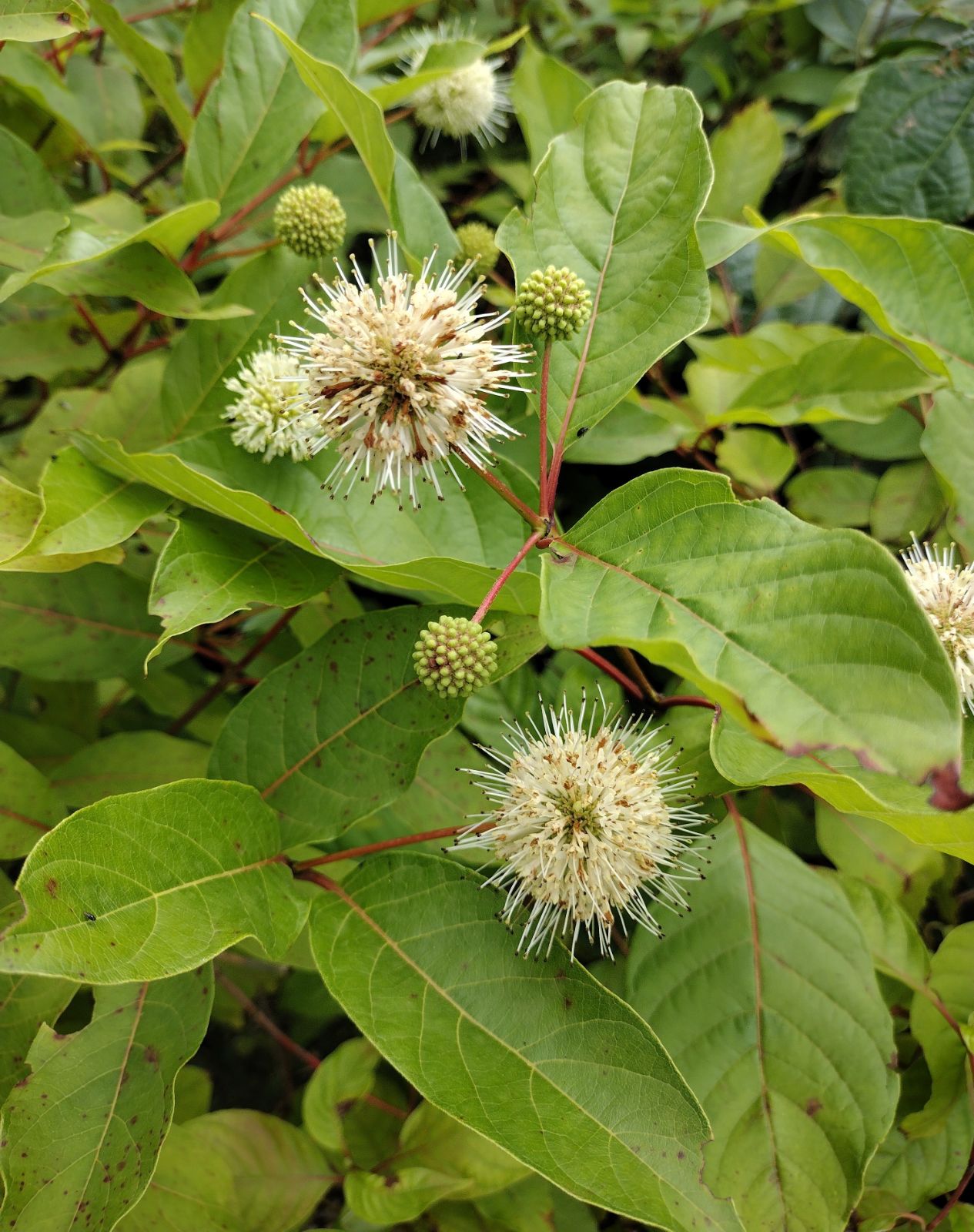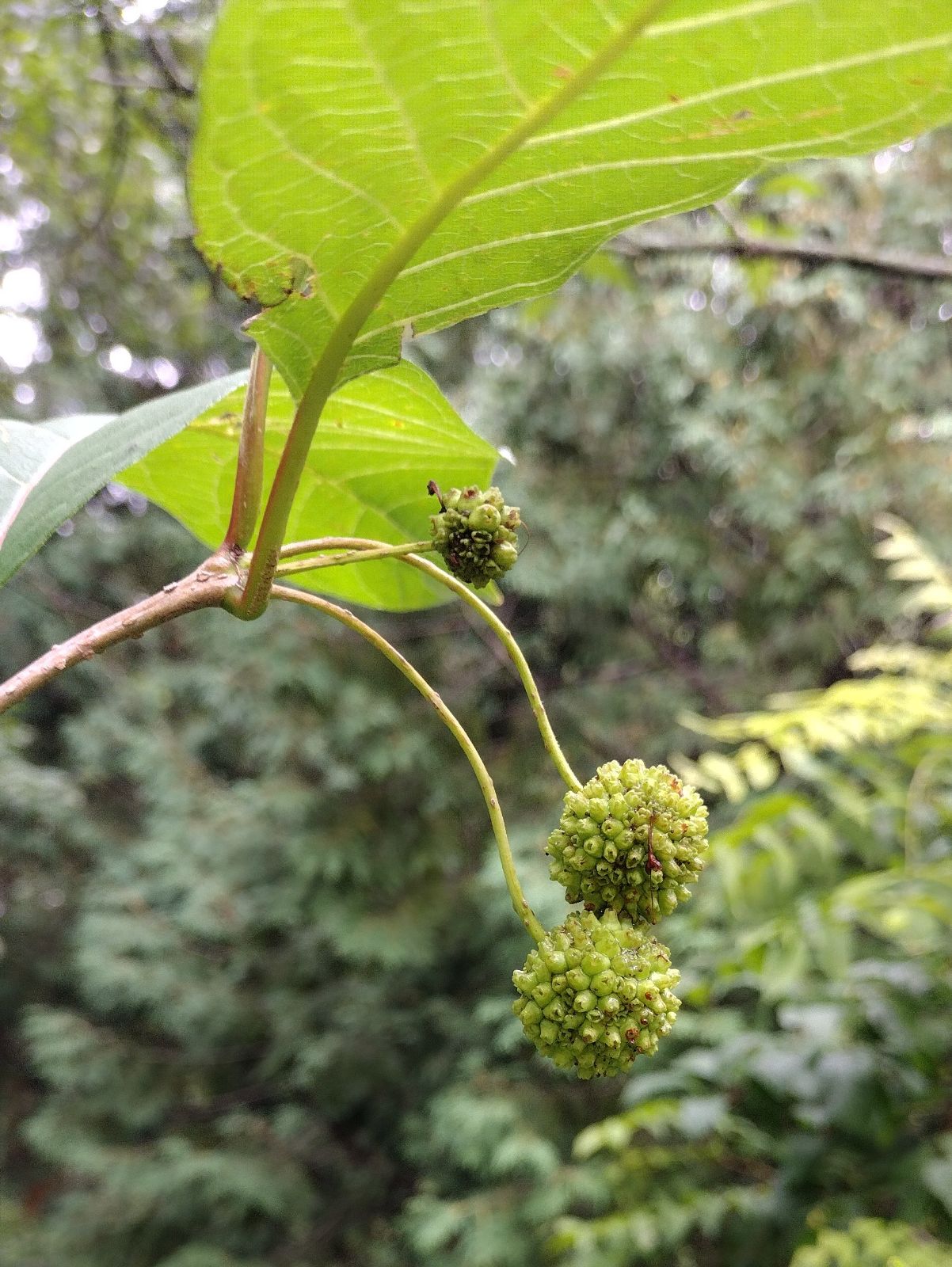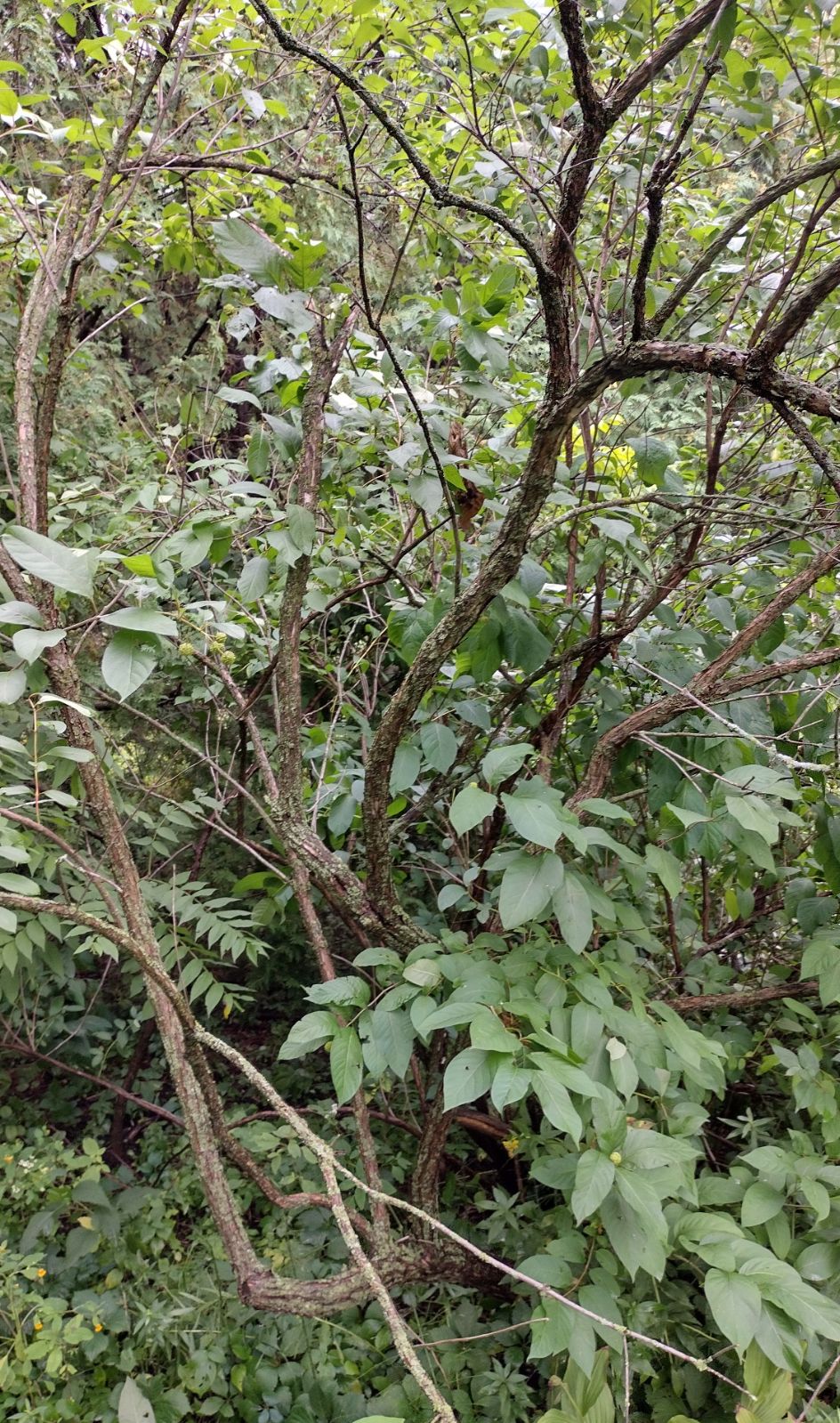Cephalanthus occidentalis
Credits
Article from Bean's Trees and Shrubs Hardy in the British Isles
Recommended citation
'Cephalanthus occidentalis' from the website Trees and Shrubs Online (treesandshrubsonline.
Genus
Common Names
- Buttonbush
Other taxa in genus
A deciduous shrub from 3 to 6 ft, occasionally 10 to 15 ft high, with glabrous, shining, olive-green young stems. Leaves opposite, in pairs or in threes, oval or ovate, 2 to 5 in. long, about half or scarcely half as wide; tapering at both ends, glabrous and glossy dark green above, paler and slightly downy on the midrib and veins beneath; stalks 1⁄4 to 3⁄4 in. long. Flowers small, crowded in quite globular heads 1 to 11⁄4 in. across, or, including the projecting styles, 3⁄8 in. more; these heads are borne at the end of the shoot solitary or in fours, often supplemented by others in the uppermost leaf-axils. Corolla creamy white, with a slender tube and four rounded lobes; style very long.
Native of the eastern United States and Canada; introduced in 1735. It reaches from New Brunswick to Florida, and the same species is said to occur in Cuba. It is usually found in moist situations, and in cultivation is averse to dryness at the root; it thrives well in a peaty soil. Flowering in August, it is desirable on that account, and although not showy, is interesting as one of the few hardy shrubby plants in the large family to which it belongs. It possesses bitter, tonic properties similar to those of its ally, the cinchona (quinine) plant. It is best propagated from imported seeds, the plants so raised thriving better than those raised from cuttings or layers.




